-
 Bitcoin
Bitcoin $117900
0.31% -
 Ethereum
Ethereum $3766
0.28% -
 XRP
XRP $3.176
-0.31% -
 Tether USDt
Tether USDt $1.000
0.00% -
 BNB
BNB $795.6
1.51% -
 Solana
Solana $186.8
-1.09% -
 USDC
USDC $0.9999
-0.01% -
 Dogecoin
Dogecoin $0.2353
-1.33% -
 TRON
TRON $0.3226
1.49% -
 Cardano
Cardano $0.8172
-1.08% -
 Sui
Sui $4.178
3.06% -
 Hyperliquid
Hyperliquid $43.05
-3.39% -
 Stellar
Stellar $0.4367
-0.57% -
 Chainlink
Chainlink $18.62
1.47% -
 Hedera
Hedera $0.2828
6.63% -
 Bitcoin Cash
Bitcoin Cash $584.7
5.65% -
 Avalanche
Avalanche $24.81
2.53% -
 Litecoin
Litecoin $112.8
-0.88% -
 UNUS SED LEO
UNUS SED LEO $8.975
-0.08% -
 Shiba Inu
Shiba Inu $0.00001395
-1.07% -
 Toncoin
Toncoin $3.285
-1.05% -
 Ethena USDe
Ethena USDe $1.001
0.01% -
 Polkadot
Polkadot $4.123
0.76% -
 Uniswap
Uniswap $10.49
-0.18% -
 Monero
Monero $326.5
0.14% -
 Dai
Dai $0.9999
-0.02% -
 Bitget Token
Bitget Token $4.576
0.34% -
 Pepe
Pepe $0.00001247
-1.55% -
 Cronos
Cronos $0.1400
3.77% -
 Aave
Aave $295.1
-0.73%
What does it mean when the DMI indicator ADX soars? What does +DI cross -DI mean?
When the ADX soars above 25 in crypto trading, it signals a strong trend; +DI crossing above -DI suggests buying, while -DI over +DI indicates selling.
Jun 10, 2025 at 08:22 am
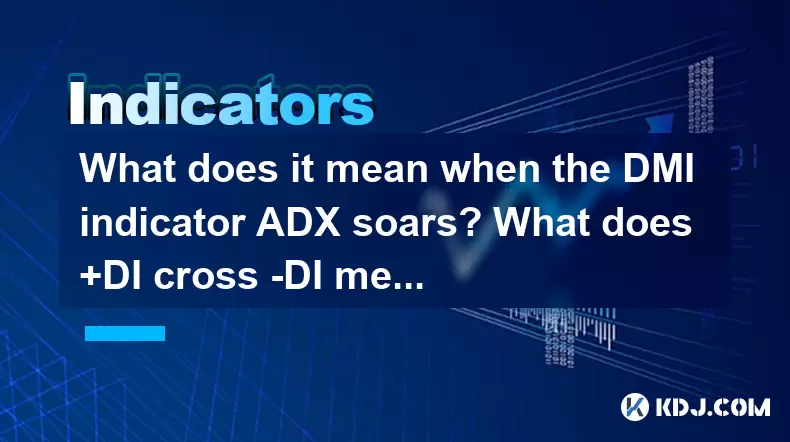
When delving into the world of cryptocurrency trading, technical analysis plays a crucial role in making informed decisions. Among the various tools available, the Directional Movement Index (DMI) and its component, the Average Directional Index (ADX), are pivotal for traders seeking to gauge the strength of a trend. Additionally, the crossover of the Positive Directional Indicator (+DI) and the Negative Directional Indicator (-DI) provides significant insights into market direction. In this article, we will explore what it means when the ADX soars and what the +DI crossing -DI signifies in the context of cryptocurrency trading.
Understanding the DMI and ADX
The Directional Movement Index (DMI) is a technical indicator developed by J. Welles Wilder, which helps traders identify the direction of a trend and its strength. The DMI consists of three lines: the Positive Directional Indicator (+DI), the Negative Directional Indicator (-DI), and the Average Directional Index (ADX). The ADX, in particular, measures the strength of a trend, irrespective of its direction.
The ADX is calculated based on the moving average of the difference between +DI and -DI. When the ADX line soars, it indicates that the current trend is gaining strength. A soaring ADX typically means that the trend is becoming more pronounced, and traders should pay close attention to whether this trend is bullish or bearish.
What Does It Mean When the ADX Soars?
When the ADX soars, it suggests that the trend in the cryptocurrency market is becoming stronger. An ADX value above 25 is generally considered to indicate a strong trend, while a value above 50 suggests an extremely strong trend. Here are some key points to consider when the ADX soars:
Strong Trend Confirmation: A soaring ADX confirms that the current trend, whether bullish or bearish, is robust and likely to continue. Traders can use this information to stay in their positions longer, expecting the trend to persist.
Trend Following Strategies: When the ADX is high, trend-following strategies become more effective. Traders might look to enter trades in the direction of the trend, as the likelihood of the trend continuing is higher.
Volatility Increase: A soaring ADX often accompanies increased market volatility. Traders should be prepared for larger price swings and adjust their risk management strategies accordingly.
Avoid Counter-Trend Trades: With a strong trend indicated by a soaring ADX, it is generally not advisable to initiate counter-trend trades. The chances of success are lower when the trend is strong.
The Significance of +DI Crossing -DI
The crossover of +DI and -DI is another critical aspect of the DMI that traders use to identify potential entry and exit points in the market. When the +DI crosses above the -DI, it suggests that the bullish momentum is gaining strength, and vice versa for a bearish momentum.
Bullish Signal: When the +DI crosses above the -DI, it is considered a bullish signal. This crossover suggests that the upward momentum in the market is strengthening, and it might be a good time to consider buying or holding onto long positions.
Bearish Signal: Conversely, when the -DI crosses above the +DI, it is seen as a bearish signal. This indicates that the downward momentum is increasing, and traders might consider selling or shorting the cryptocurrency.
Confirmation with ADX: To increase the reliability of these signals, traders often look at the ADX value. If the ADX is above 25 when the crossover occurs, it adds more weight to the signal, suggesting a stronger trend.
Practical Application in Cryptocurrency Trading
To effectively use the DMI and ADX in cryptocurrency trading, traders need to follow a systematic approach. Here are the steps to integrate these indicators into your trading strategy:
Monitor the ADX: Keep an eye on the ADX line to gauge the strength of the current trend. A soaring ADX indicates a strong trend that traders should consider following.
Watch for Crossovers: Pay attention to the crossovers between +DI and -DI. A bullish crossover (+DI above -DI) suggests a potential buying opportunity, while a bearish crossover (-DI above +DI) indicates a potential selling or shorting opportunity.
Combine with Other Indicators: To increase the accuracy of your trading decisions, consider combining the DMI and ADX with other technical indicators such as moving averages, RSI, or MACD.
Set Stop-Losses and Take-Profits: Given the potential for increased volatility when the ADX soars, it is crucial to set appropriate stop-loss and take-profit levels to manage risk effectively.
Real-World Examples in Cryptocurrency Trading
To better understand how the DMI and ADX work in practice, let's look at a few hypothetical scenarios in the cryptocurrency market:
Scenario 1: Bitcoin (BTC) Trend Analysis
- Suppose the ADX for Bitcoin soars above 30, indicating a strong trend. At the same time, the +DI crosses above the -DI. This combination suggests a strong bullish trend, and traders might consider buying or holding onto their BTC positions, expecting the price to continue rising.
Scenario 2: Ethereum (ETH) Bearish Signal
- In another case, the ADX for Ethereum remains above 25, and the -DI crosses above the +DI. This indicates a strong bearish trend, and traders might consider selling their ETH or initiating short positions, anticipating a continued downward move.
Scenario 3: Altcoin Volatility
- For an altcoin like Cardano (ADA), the ADX soars to 40, and the +DI and -DI lines are close to each other. This suggests a strong trend with increased volatility. Traders should be cautious and adjust their risk management strategies accordingly.
FAQs
Q1: Can the DMI and ADX be used for short-term trading in cryptocurrencies?
Yes, the DMI and ADX can be used for short-term trading in cryptocurrencies. Traders can look for quick crossovers between +DI and -DI, especially when the ADX is above 25, to identify short-term trading opportunities. However, due to the increased volatility in short-term trading, it is essential to use tight stop-losses and manage risk carefully.
Q2: How often should I check the ADX and DMI indicators for cryptocurrency trading?
The frequency of checking the ADX and DMI indicators depends on your trading style. For day traders, checking these indicators every few hours or even more frequently might be necessary. For swing traders, checking the indicators daily or weekly could be sufficient. It's important to align the frequency with your trading strategy and time horizon.
Q3: Are there any limitations to using the DMI and ADX in cryptocurrency trading?
Yes, there are limitations to using the DMI and ADX in cryptocurrency trading. These indicators can sometimes generate false signals, especially in choppy or sideways markets. Additionally, the ADX only measures the strength of a trend and not its direction, so it should be used in conjunction with other indicators to confirm trading signals. Traders should also be aware of market conditions and news events that could affect the reliability of these indicators.
Q4: Can the DMI and ADX be used for all cryptocurrencies, or are they better suited for certain types?
The DMI and ADX can be used for all cryptocurrencies, but they might be more effective for cryptocurrencies with higher liquidity and trading volumes. For major cryptocurrencies like Bitcoin and Ethereum, the indicators tend to be more reliable due to the larger number of traders and higher market activity. For less liquid altcoins, the indicators might produce more false signals, and traders should exercise caution and use additional confirmation tools.
Disclaimer:info@kdj.com
The information provided is not trading advice. kdj.com does not assume any responsibility for any investments made based on the information provided in this article. Cryptocurrencies are highly volatile and it is highly recommended that you invest with caution after thorough research!
If you believe that the content used on this website infringes your copyright, please contact us immediately (info@kdj.com) and we will delete it promptly.
- Cryptos to Watch in 2025: Punisher Coin, Chainlink, and the Altcoin Arena
- 2025-07-27 18:30:13
- Bitcoin, Altcoins, Rebound: Navigating the Crypto Comeback Trail
- 2025-07-27 18:30:13
- Ethereum, Bitcoin, and Altcoins: A Shift in Crypto Tides?
- 2025-07-27 19:10:13
- Windtree Therapeutics' Bold BNB Strategy: A $520 Million Crypto Play
- 2025-07-27 19:10:13
- Solana, Staking, and Unilabs: What's the Buzz in the Crypto Space?
- 2025-07-27 16:50:13
- VeChain, HBAR, Remittix: Navigating the Crypto Landscape in 2025
- 2025-07-27 17:10:12
Related knowledge
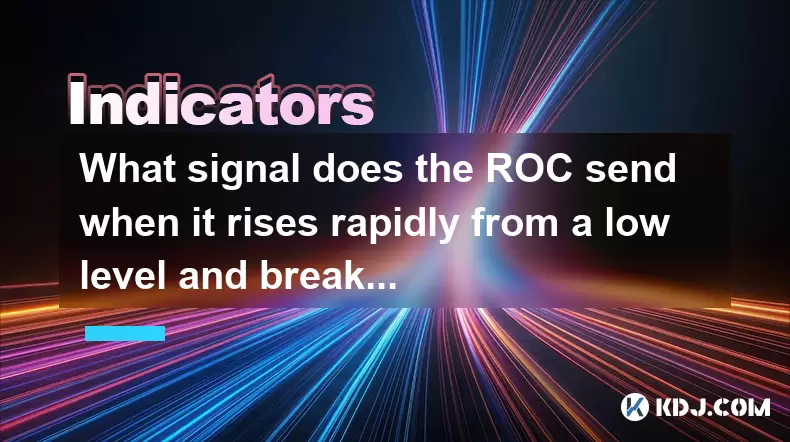
What signal does the ROC send when it rises rapidly from a low level and breaks through the zero axis?
Jul 27,2025 at 10:15am
Understanding the Rate of Change (ROC) IndicatorThe Rate of Change (ROC) is a momentum-based oscillator used in technical analysis to measure the perc...
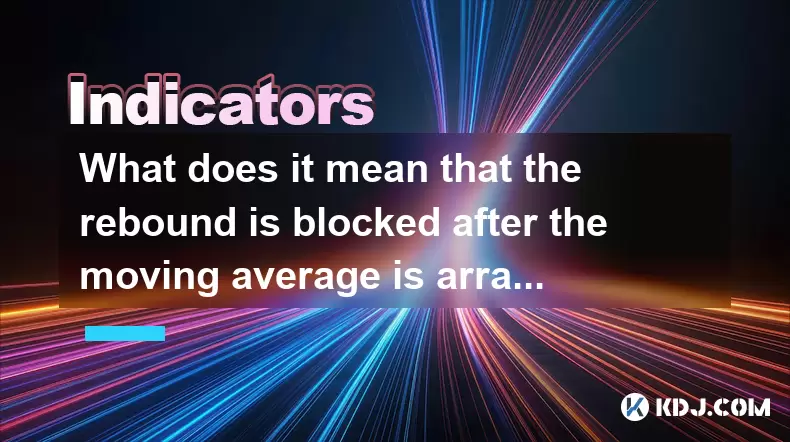
What does it mean that the rebound is blocked after the moving average is arranged in a short position for the first time?
Jul 26,2025 at 10:51am
Understanding the Short-Term Moving Average ConfigurationWhen traders refer to a 'short position arrangement' in moving averages, they are describing ...
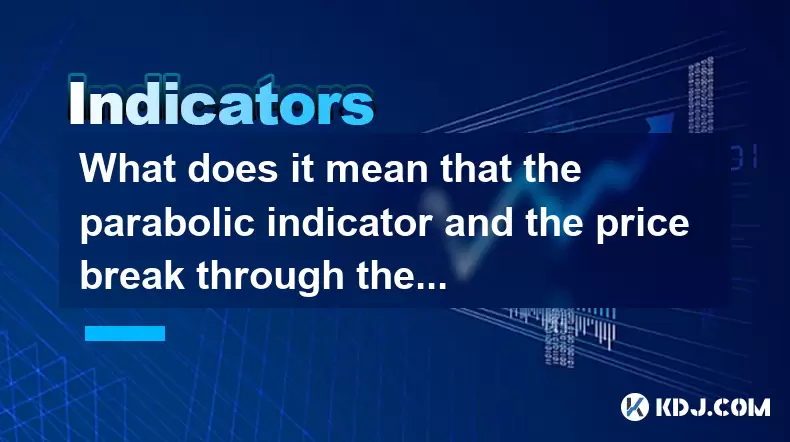
What does it mean that the parabolic indicator and the price break through the previous high at the same time?
Jul 26,2025 at 07:22pm
Understanding the Parabolic Indicator (SAR)The Parabolic SAR (Stop and Reverse) is a technical analysis tool developed by J. Welles Wilder to identify...
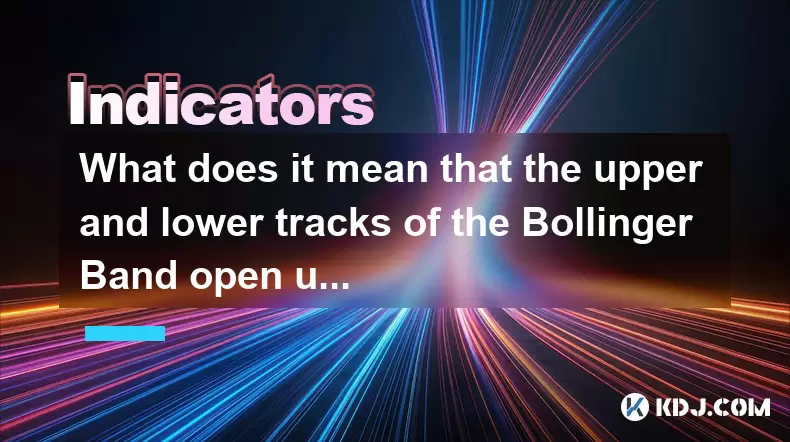
What does it mean that the upper and lower tracks of the Bollinger Band open upward at the same time?
Jul 27,2025 at 02:49pm
Understanding the Bollinger Band StructureThe Bollinger Band is a widely used technical analysis tool developed by John Bollinger. It consists of thre...
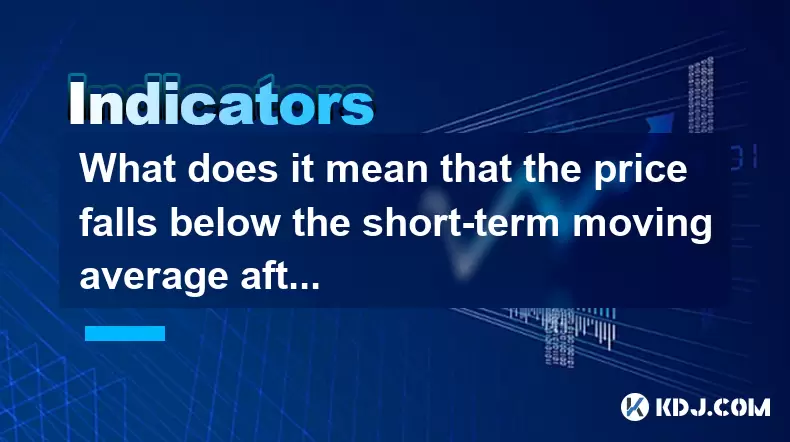
What does it mean that the price falls below the short-term moving average after the RSI top divergence?
Jul 26,2025 at 11:01pm
Understanding RSI Top Divergence in Cryptocurrency TradingThe Relative Strength Index (RSI) is a momentum oscillator widely used in cryptocurrency tra...
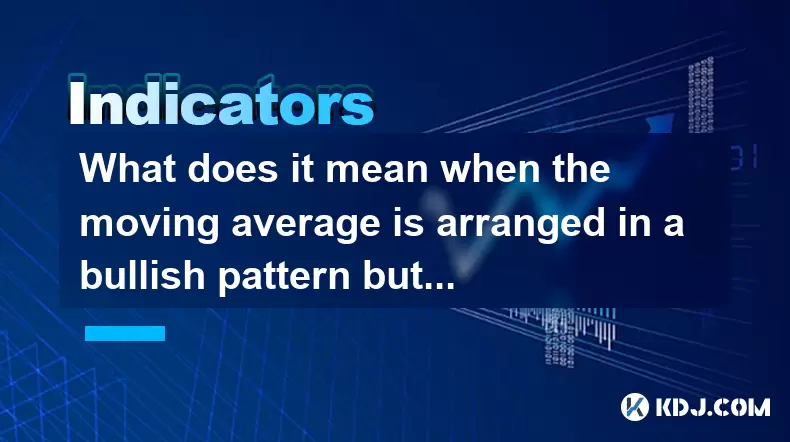
What does it mean when the moving average is arranged in a bullish pattern but the MACD bar is shortened?
Jul 27,2025 at 06:07am
Understanding the Bullish Moving Average PatternWhen traders observe a bullish moving average pattern, they typically refer to a configuration where s...

What signal does the ROC send when it rises rapidly from a low level and breaks through the zero axis?
Jul 27,2025 at 10:15am
Understanding the Rate of Change (ROC) IndicatorThe Rate of Change (ROC) is a momentum-based oscillator used in technical analysis to measure the perc...

What does it mean that the rebound is blocked after the moving average is arranged in a short position for the first time?
Jul 26,2025 at 10:51am
Understanding the Short-Term Moving Average ConfigurationWhen traders refer to a 'short position arrangement' in moving averages, they are describing ...

What does it mean that the parabolic indicator and the price break through the previous high at the same time?
Jul 26,2025 at 07:22pm
Understanding the Parabolic Indicator (SAR)The Parabolic SAR (Stop and Reverse) is a technical analysis tool developed by J. Welles Wilder to identify...

What does it mean that the upper and lower tracks of the Bollinger Band open upward at the same time?
Jul 27,2025 at 02:49pm
Understanding the Bollinger Band StructureThe Bollinger Band is a widely used technical analysis tool developed by John Bollinger. It consists of thre...

What does it mean that the price falls below the short-term moving average after the RSI top divergence?
Jul 26,2025 at 11:01pm
Understanding RSI Top Divergence in Cryptocurrency TradingThe Relative Strength Index (RSI) is a momentum oscillator widely used in cryptocurrency tra...

What does it mean when the moving average is arranged in a bullish pattern but the MACD bar is shortened?
Jul 27,2025 at 06:07am
Understanding the Bullish Moving Average PatternWhen traders observe a bullish moving average pattern, they typically refer to a configuration where s...
See all articles

























































































